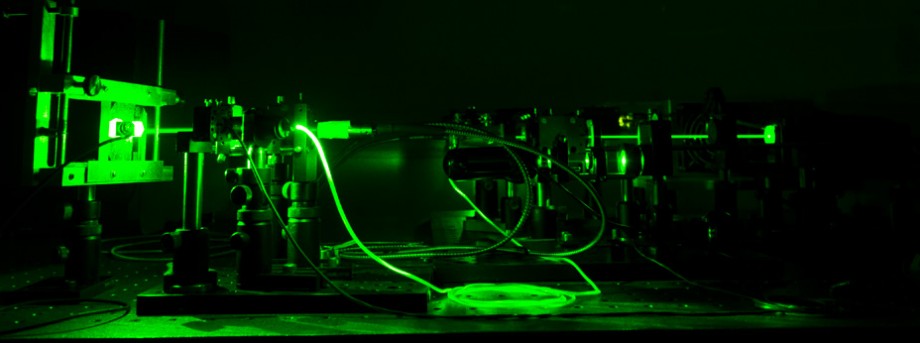The University of Nottingham
 Exchange online
Exchange online
Research Exchange
From sound to light

A new approach to component testing in the aerospace industry could improve safety and save money.
Ultrasound detection has long been used for the non-destructive testing of components. This simple yet powerful technique uses ultrasound to permeate the inner structure or surface of the test component’s material and its detection provides information about its properties, thickness and possible defects.
Piezoelectric transducers are traditionally used for ultrasonic generation and detection. Although they have been used successfully in the aerospace industry the devices have limitations. They use wires, require testers to get close to the component being tested and are very expensive.
Researchers at Nottingham are developing a new breed of ultrasonic transducers — CHOTs (Cheap Optical Transducers) — which overcome the limitations of the traditional technology.
CHOTs are simple 2D structures which are applied by contact printing, laser etching and photolithography, or attached as printed stickers and left in place. They are then optically excited using a simple laser set-up to either generate or detect ultrasound. The use of lasers allows for remote and wireless operation.
CHOTs are very cheap — potentially less than 1p each — so can be used in great numbers. They are also extremely small and robust, allowing them to survive environments with extreme temperatures, high pressures and vibration.
Dr Theodosia Stratoudaki, said: “CHOTs have the potential to result in a significant increase in aircraft and passenger safety, while also contributing to a substantial cost saving through a decrease in maintenance and operating times. They can also be used while the aircraft is in service, for continuous monitoring. It is entirely feasible for CHOTs to be used to monitor turbine blades while the aircraft is flying.”
Tags: aerospace, CHOT, transducers, ultrasound detection
Leave a Reply
Other

Top prize for quantum physicist
A University of Nottingham physicist has won a prestigious medal from the Institute of Physics for […]

Zero carbon HOUSE designed and built by students comes home
Design and construct a low cost, zero carbon, family starter home, transport it to Spain, build […]